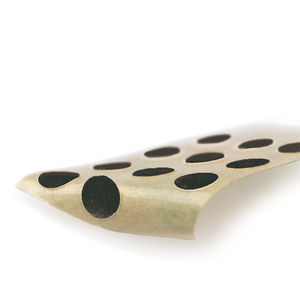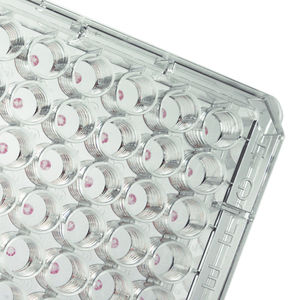
- Laboratory
- Physico-chemical analysis
- Oxygen sensor
- PreSens Precision Sensing GmbH
Dissolved oxygen sensor SP-PSt3-NAUoxygenlaboratory




Add to favorites
Compare this product
Characteristics
- Evaluation type
- dissolved oxygen, oxygen
- Applications
- laboratory
Description
Sensor spots are the most versatile version of non-invasive optical oxygen sensors. The red side of the spot can be attached to the inner surface of any transparent glass or plastic vessel like e. g. shake and spinner flasks, tubes, Petri dishes or cultivation bags. Oxygen is measured contactless and non-destructively through the transparent vessel wall. The SP-PSt3-NAU has a measurement range of 0 – 100 % oxygen in dissolved or gaseous phase. The oxygen sensitive coating is immobilized on 125 µm flexible transparent polyester foil, which does not stand autoclaving.
Non-invasive measurements through the vessel wall
No consumption of oxygen
Signal independent of flow velocity
Measure oxygen in liquids as well as in gas phase
PPLICATIONS
Bioprocess Development: Oxygen Monitoring in Shake Flasks
O2 supply is one of the major issues in the cultivation of aerobic organisms. Shake flask cultures are widely applied in academic and industrial bioprocess development. As adequate methods for real monitoring of dissolved oxygen were missing, sufficient O2 supply is usually assumed. The non-invasive oxygen sensors in shake flasks now ensure oxygen supply and give new insights into metabolic activity.
Respiration & Photosynthesis: Oxygen Monitoring in Glass Vials
Determination of respiratory activity is often performed for water organisms such as invertebrates, larval stages or eggs, but also for bacteria, cell cultures, yeasts or fungi.
VIDEO
Catalogs
No catalogs are available for this product.
See all of PreSens Precision Sensing GmbH‘s catalogsOther PreSens Precision Sensing GmbH products
O2 SENSORS
*Prices are pre-tax. They exclude delivery charges and customs duties and do not include additional charges for installation or activation options. Prices are indicative only and may vary by country, with changes to the cost of raw materials and exchange rates.













